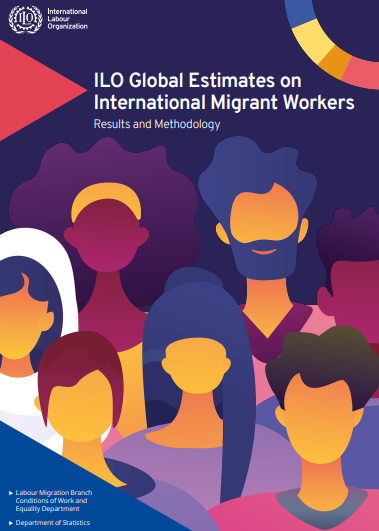ILO Global Estimates on International Migrant Workers – 2022

- 21 Jan 2025
In New:
By addressing labour market shortages in host nations and contributing remittances to home countries, International Migrants (IM) continue to make contributions to world economic growth, the fourth edition of ‘Global Estimates on International Migrant Workers’, released by the International Labour Organization (ILO), stated.
Key Findings:
Global Representation:
- International Migrants (IMs) = 4.7% of global labour force - 167.7 million total:
- Employed: 155.6 million
- Unemployed (but seeking work): 12.1 million
- Increase of 30+ million migrant workers since 2013
- Growth rate dropped below 1% annually (2019–2022) due to COVID-19
Gender Composition:
- Male IMs: 61.3% (102.7 million)
- Female IMs: 38.7% (64.9 million)
- Lower female participation attributed to:
- Lower female migration rates globally
- Gender-based barriers in labour markets
- Over-representation in informal and unpaid sectors
Age Distribution:
- Prime working age (25–54 yrs): 74.9%
- Youth (15–24 yrs): 9.3%
- Older adults (55–64 yrs): 12.5%
- Seniors (65+ yrs): 3.4%
Sector-wise Employment:
Sector Share of IMs Notes
Services 68.4% Highest; women dominate (80.7%)
Industry 24.3% On par with non-migrants
Agriculture 7.4% Far lower than non-migrants (24.3%)
Care economy in high-income countries is a major pull for female migrants.
Host Country Distribution:
Region/Income Group % of IMs Notes
High-income countries 68.4% (114 million) Majorly Europe & North America
Upper-middle-income 17.4% (29.2 million)
Arab States 13.3% Declined since 2013
Europe (23.3%) and North America (22.6%) are top destinations. Arab states saw a 3% decline over the decade.
Definition: International Migrants (IMs)
As per the UN: Persons residing in a country different from their place of usual residence for at least one year, regardless of reason or legal status. Includes refugees, asylum seekers, etc.
Role & Contributions of IMs:
- Economic Drivers: Fill labour shortages (healthcare, construction, care work).
- Remittances: Boost home country economies.
- Demographic Support: Help address aging populations in developed nations.
Cultural Exchange: Promote diversity and global connectivity.
